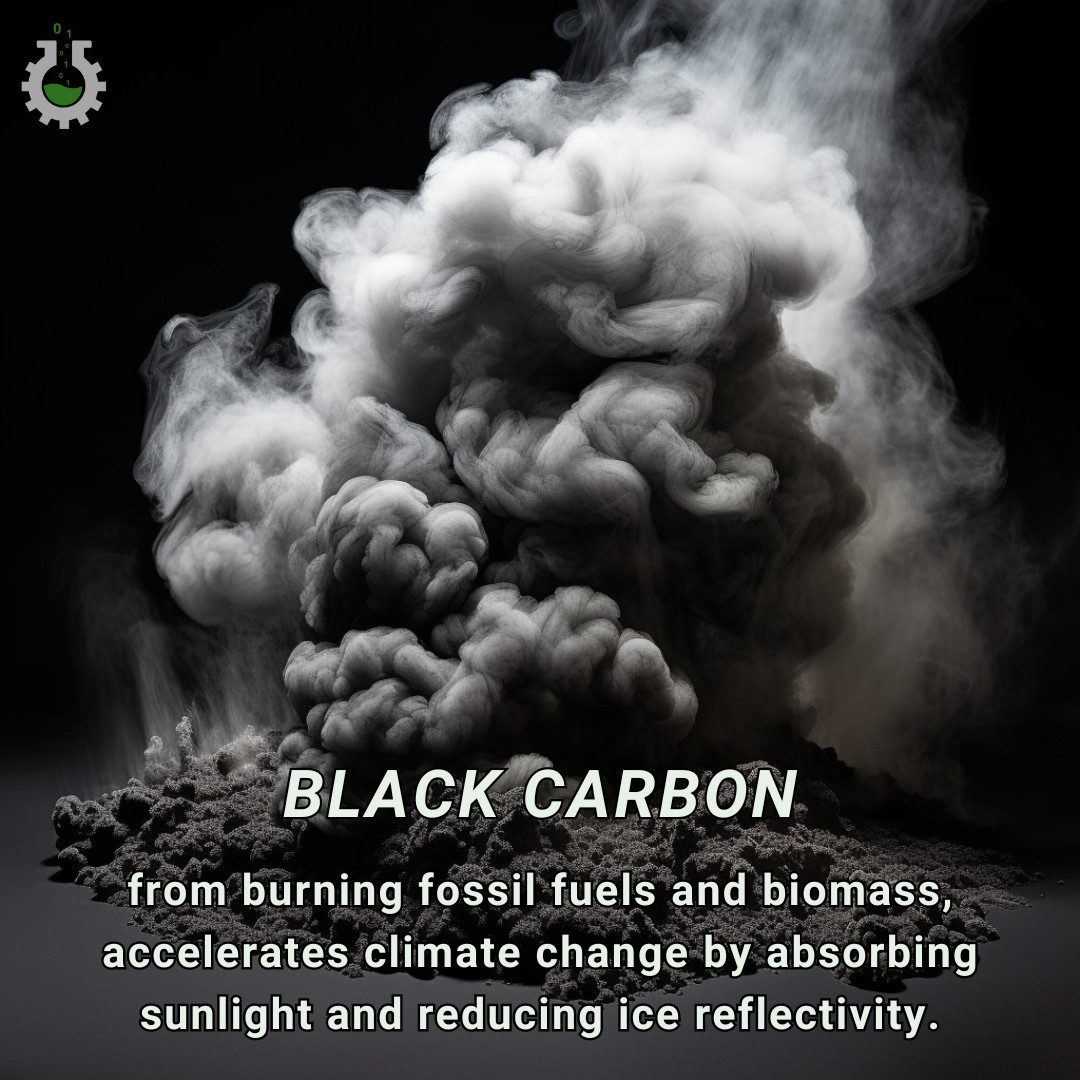July 29, 2024
Climate Change Poster Collection of the Day – Black Carbon
Book a Demo
Today’s Climate Change Poster Collection focus on Black carbon, commonly known as soot, plays a significant yet often underappreciated role in climate change. Unlike carbon dioxide, which persists in the atmosphere for centuries, black carbon has a much shorter atmospheric lifespan, typically lasting only days to weeks. However, its impact during this brief period is profound and multifaceted. Produced primarily from the incomplete combustion of fossil fuels, biomass, and biofuels, black carbon particles absorb sunlight and generate heat, contributing to atmospheric warming. This warming effect is particularly potent because black carbon is highly efficient at absorbing solar radiation, making it one of the most powerful climate forcers on a per-mass basis.
When black carbon particles settle on snow and ice, they reduce the surface albedo—or reflectivity—causing these surfaces to absorb more heat and accelerate melting. This phenomenon is particularly concerning in polar regions, where accelerated ice melt contributes to rising sea levels and further exacerbates global warming. The Arctic, often referred to as the Earth’s air conditioner, is warming at more than twice the rate of the global average, and black carbon deposition is a significant driver of this rapid change. The loss of reflective ice and snow surfaces not only accelerates warming but also disrupts local ecosystems and indigenous communities that rely on stable ice conditions for their way of life.
Moreover, black carbon’s impact extends beyond temperature rise; it also affects weather patterns, precipitation, and cloud formation, leading to unpredictable climatic changes. For instance, black carbon can alter the monsoon patterns in South Asia, affecting water availability and agricultural productivity for millions of people. In the atmosphere, black carbon particles can act as cloud condensation nuclei, influencing cloud properties and lifetimes. This can lead to changes in the hydrological cycle, affecting both the distribution and intensity of rainfall. Such alterations can have far-reaching consequences, including increased frequency and severity of droughts and floods, which in turn impact food security, water resources, and human livelihoods.
The health implications of black carbon are equally alarming. As a major component of fine particulate matter (PM2.5), black carbon has been linked to a range of respiratory and cardiovascular diseases. Exposure to PM2.5 is associated with increased risks of asthma, lung cancer, heart attacks, and premature death. Vulnerable populations, including children, the elderly, and those with pre-existing health conditions, are particularly at risk. In urban areas, where traffic emissions are a significant source of black carbon, air quality can deteriorate to hazardous levels, posing immediate and long-term health risks to residents.
Despite its significant impact, black carbon mitigation offers a unique opportunity for rapid climate benefits. Reducing emissions from diesel engines, industrial processes, and residential cooking and heating can lead to immediate improvements in air quality and climate. Technologies such as cleaner cookstoves, diesel particulate filters, and transitioning to renewable energy sources are pivotal in this effort. For instance, replacing traditional biomass cookstoves with cleaner alternatives can significantly reduce black carbon emissions while also improving indoor air quality and reducing health risks for millions of households worldwide.
Addressing black carbon emissions, therefore, not only helps in combating climate change but also promotes public health and environmental justice, particularly in regions where air pollution disproportionately affects vulnerable communities. Low-income and marginalized communities often bear the brunt of air pollution, living in proximity to major sources of black carbon such as highways, industrial facilities, and waste-burning sites. By targeting black carbon reductions, we can achieve co-benefits that extend beyond climate mitigation to include social equity, health improvements, and economic development.
While black carbon may not linger in the atmosphere as long as other greenhouse gases, its potent warming effects and health impacts make it a critical target for climate action and policy. Effective mitigation strategies require a multi-faceted approach, including technological innovation, regulatory measures, and international cooperation. By prioritizing black carbon reduction, we can achieve rapid and tangible benefits for the climate, public health, and global communities, making it an essential component of comprehensive climate change mitigation efforts.
Discover an inspiring collection of climate change poster.



